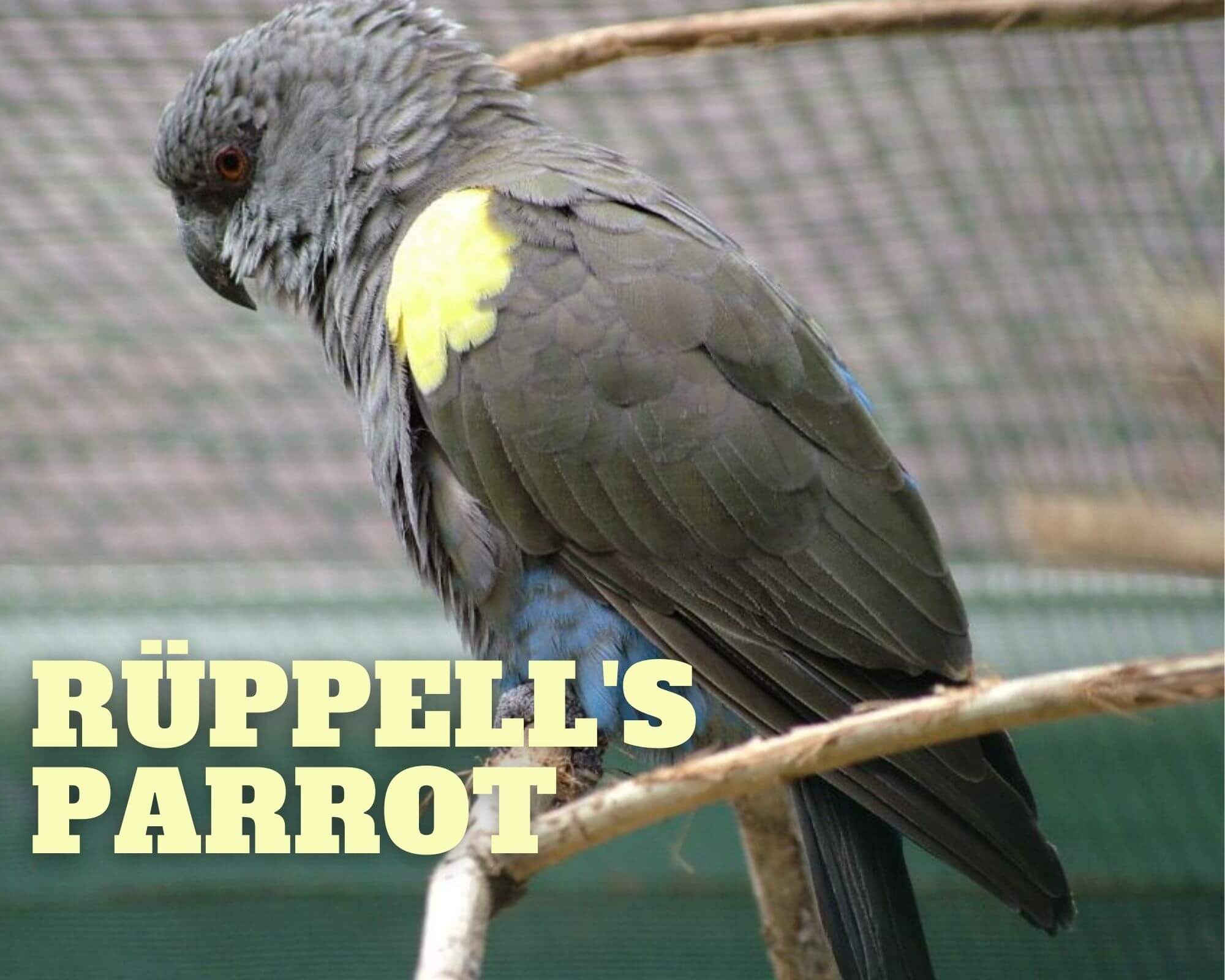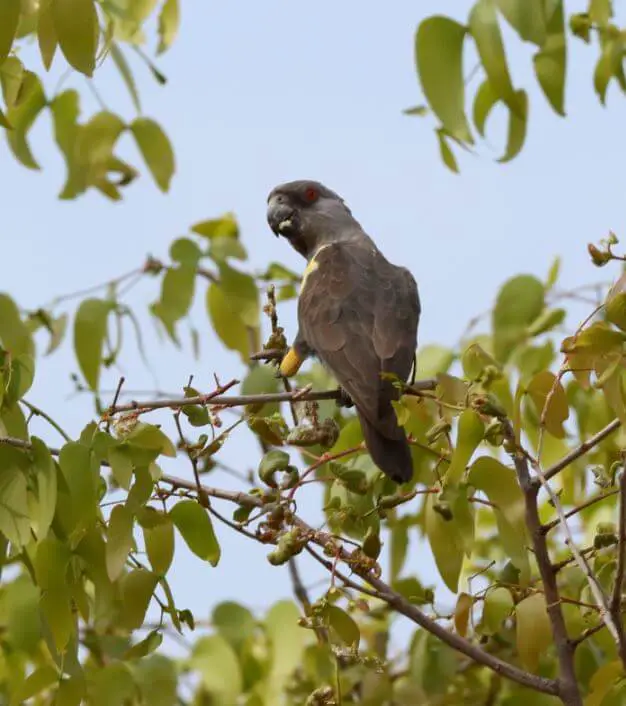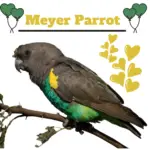
Rüppell’s Parrot 22–25 cm; 98–140 g. Dusky brown with slight blue wash on rump and tail-coverts. Carpal joint, the leading edge of the wing, and underwing-coverts yellow, thighs yellow.
Identification
Rüppell’s Parrot Female is similar but with rump and upper tail-coverts blue, lower belly to under tail-coverts dull blue. Immature like female but yellow absent or duller, wing feathers tipped or margined whitish.
Systematics History
Thought to form a species group with P. Meyer, P. cryptoxanthin and P. Crassus, and possibly others. Monotypic.
Subspecies
Monotypic.

Distribution
SW Angola (coastal plain N to Luanda) and N & C Namibia.
Habitat
Well-developed dry Acacia woodland along watercourses, also dry Euphorbia forests, Brachystegia woodland, Adansonia-dominated thornveld, and montane Commiphora/Acacia formations when extending upslope (generally little above 1500 m).

Movement
Resident, but partly nomadic.
Diet and Foraging
Pods, e.g. of Acacia and Faidherbia; flowers, e.g. Grewia; fruits of Ficus, fruit endocarp of Acacia and Commiphora; seeds, e.g. of Elephantorrhiza, Prosopis juliflora and Combretum imberbe; nectar of flowering mistletoe (Tapinanthus), and young shoots in the canopy of taller trees and bushes; also insect larvae.
Breeding
Feb in Namibia; around Mar-Apr in Angola, but also reported later in the year, with young in a nest in Aug. One nest was in the dead branch of an Acacia, 3 m from the ground, and occupied at least two years in succession; another was 5 m up in baobab, a third in an Acacia. Rüppell’s Parrot Eggs 3–5; in captivity, fledging at c. 4 months.
SOURCE: RubyRuppells
Conservation Status
Not globally threatened. CITES II. Fairly common in suitable habitats, but only 9000 birds are now estimated in Namibia, and its popularity among bird-fanciers coupled with its relatively restricted range means a significant reduction in overall numbers could easily occur; some illegal trading certainly occurs. Fairly common in S Angola, and frequent in Kissama National Park.




















